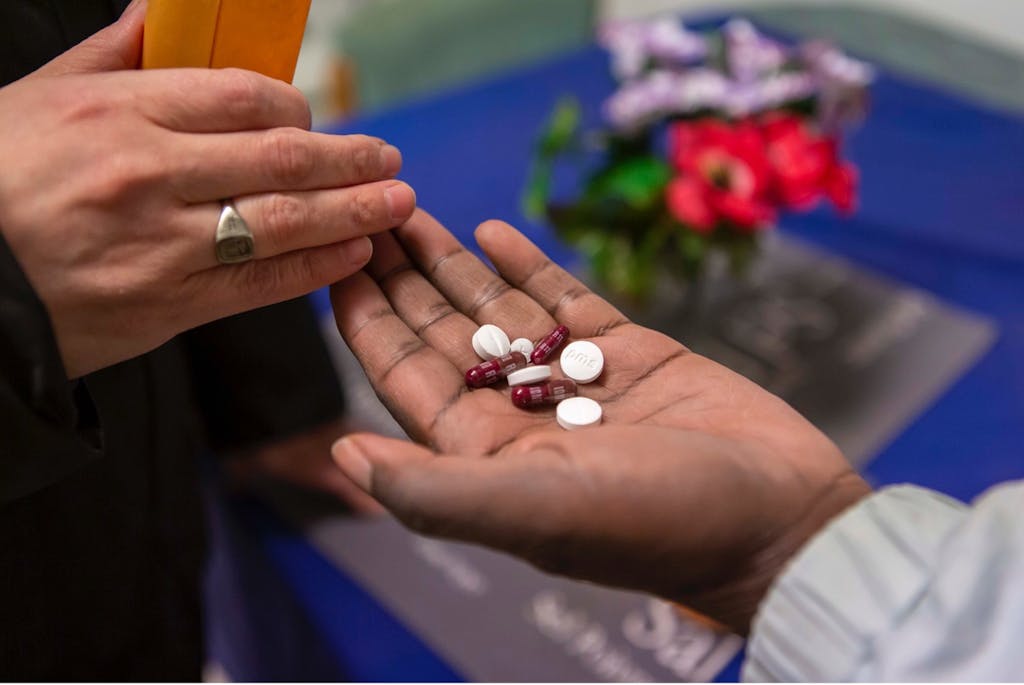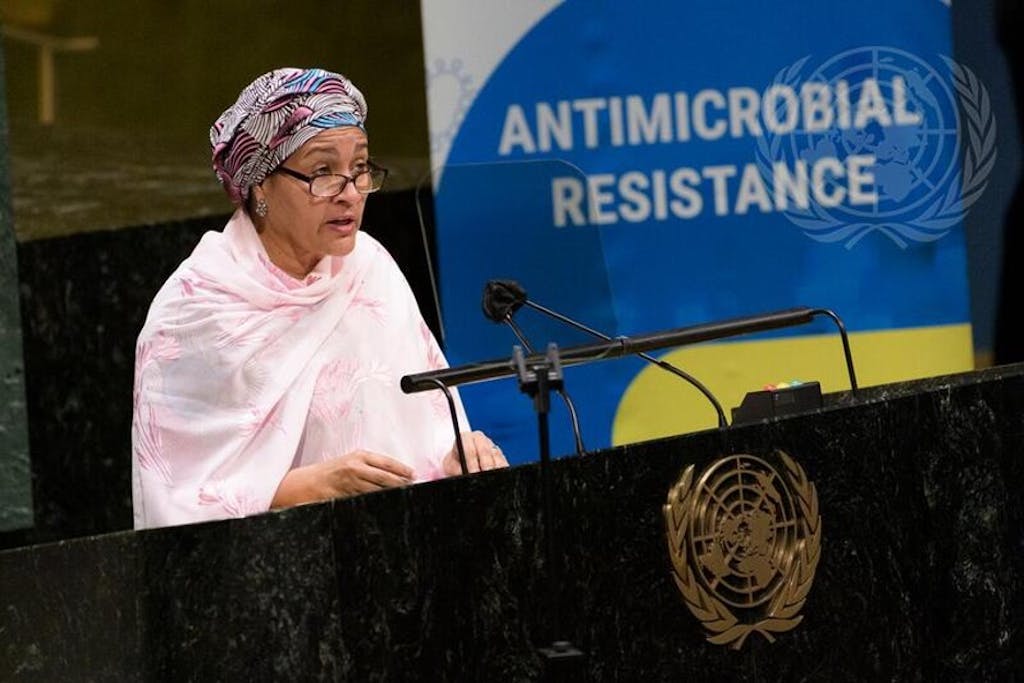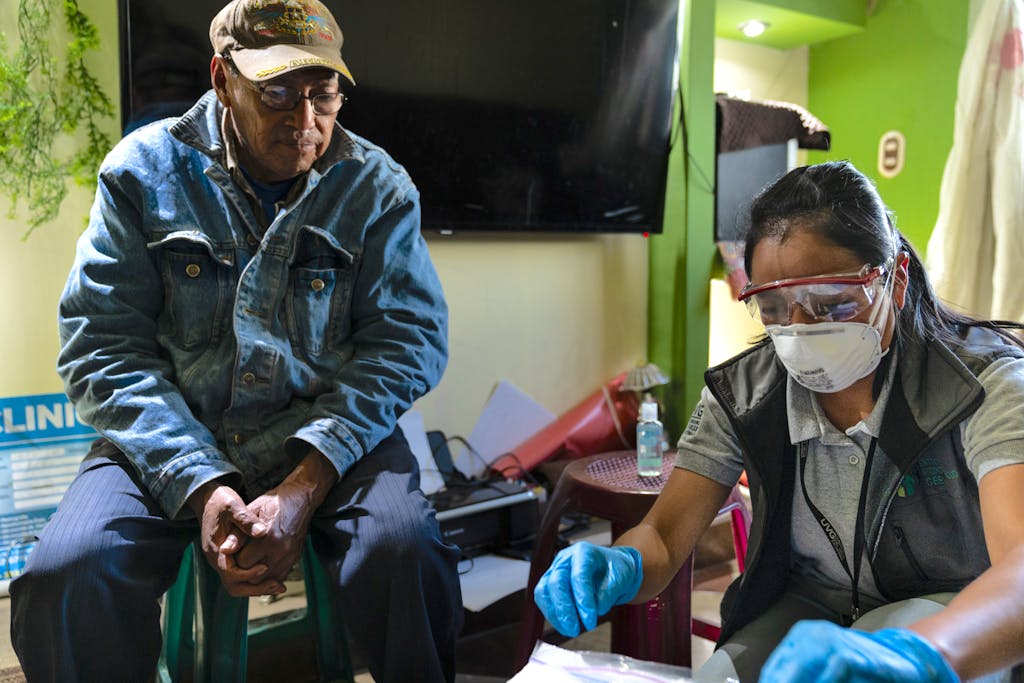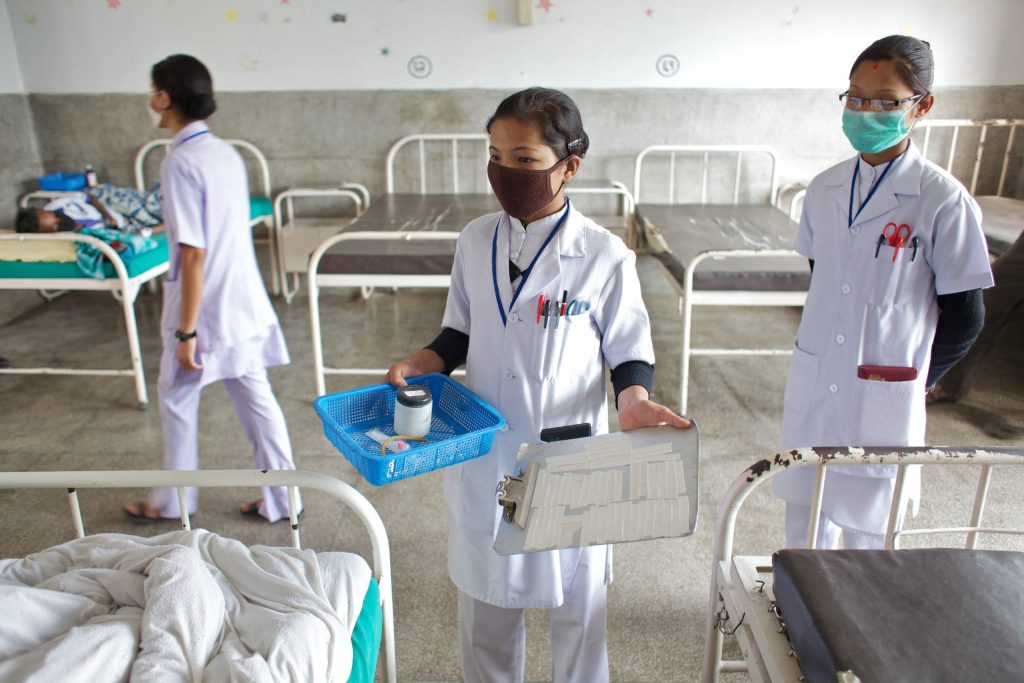
Nurses deal with HIV optimistic sufferers at a Nepal authorities Hospital which has an influenza isolation unit.
photograph: Tom Pietrasik/ WHO
earlier than the COVID-19 pandemic engulfed the world, a silent pandemic had already taken root, prolonging hospital stays, making routine surgical procedures extra hazardous, and inflicting greater than seven-hundred,000 deaths per yr. If inaction to deal with antimicrobial resistance continues, it might set off as a lot as 10 million deaths yearly by 2050. It’s time to deal with it with urgency.
The toll of antimicrobial resistance
Antimicrobial resistance (AMR) medicines are a quantity of primarily the strongest devices we now have in direction of bacterial and fungal infections, viruses, and parasites. A marvel of up up to now remedy since penicillin was invented almost a century in the past, antimicrobials save tens of millions of lives per yr. nonetheless, improper use of these medicines can create fertile floor for mutations in illnesses, which would possibly construct resistance in direction of these important therapies. by way of the COVID-19 pandemic, misuse of antimicrobial remedy has surged; ninety% of hospitalized COVID-19 sufferers inside the Americas bought antimicrobials, regardless of the very indisputable actuality that solely 7% warranted their use to deal with secondary infections. If we lose entry to on a daily basis antimicrobials, caesarean sections, hip replacements, most cancers chemotherapy, organ transplantation, and fully different common medical procedures will flip into riskier and finish in greater prices of mortality as a outcomes of commonplace infections.
furthermore, if no movement is taken to include AMR, the financial value when it entails misplaced worldwide manufacturing between now and 2050 is estimated to obtain $one hundred trillion. there might even be no such factor as a question that low- and center-earnings international areas would proceed to be extra negatively affected by AMR in coming years, fueling the widening hole of worldwide well being and financial inequity. In an evaluation achieved by the World financial institution earlier than the pandemic, an further 28.three million people could be liable to falling into extreme poverty in 2050 as a outcomes of AMR, the overwhelming majority (26.2 million) of whom would stay in low-earnings international areas. The position the pandemic has performed in growing worldwide poverty and reducing financial development inside the approaching years solely complicates the picture further.

A public well being nurse delivers tablets every morning to a affected person of hers to deal with his tuberculosis (TB). The TB has contaminated his bones and he’ll want to take an eleven-month course of remedy 5 days per week. photograph: Christine McNab/ WHO
Antibiotics not solely deal with human and animal infections; antimicrobial brokers are additionally important elements for meals safety. worldwide consumption of antimicrobials in meals and animal manufacturing is projected to rise by 70% between 2010 and 2030. Doubling agricultural productiveness to fulfill the food plan calls for of the world’s rising inhabitants with out massively growing antimicrobial use is an superb unsolved problem that calls for our collective consideration. fixing a draw again as complicated as AMR and meals insecurity requires greater solidarity and collaboration between the meals, animal, and human well being sectors—by way of a One well being strategy. One well being is a multisectoral strategy that acknowledges the innate interconnectedness between people, animals, crops, and their shared setting and emphasizes the want of sturdy collaboration to deal with multifaceted, cross-chopping well being factors similar to AMR.
Not ample worldwide progress
in current instances, the worldwide group has made vital progress. The quantity of nations that developed nationwide movement plans for AMR has elevated to a hundred and forty and counting; the World well being group (WHO), meals and Agricultural group of the United Nations (FAO), and the World group for Animal well being (OIE) normal a sturdy Tripartite; and a new worldwide Leaders Group was created. but the world stays to be woefully beneath-resourcing the AMR agenda and by no means responding with political muscle that is commensurate with the extent of risk AMR poses inside the a long time to get back.
A name to movement
This previous week the UN basis co-hosted the third name to movement convention on Antimicrobial Resistance alongside the Governments of Denmark, Colombia, Ghana, Indonesia, Thailand, and Zambia; the worldwide Centre for Antimicrobial Resistance options (ICARS); the Fleming Fund; the United Nations youngsters’s Fund (UNICEF); the Wellcome notion; and the World financial institution.
The aim of this newest name to movement on AMR was to shine a lightweight on nation progress, particularly new improvements, approaches, and insurance coverage policies on the group and nation ranges, as properly as to to look at classes from the current pandemic that will inform the worldwide response to current and future well being threats similar to AMR. Representatives of over one hundred international areas attended the convention collectively with representatives from civil society, academia, and the private sector.

Deputy Secretary-widespread Amina Mohammed addresses the closing meeting extreme-diploma interactive dialogue on Antimicrobial Resistance (AMR) 04/29/2021.
photograph: Manuel Elías/ UN photograph
Many examples of progress had been highlighted:
- In Colombia, officers are taking cross-sectorial approaches to educate well being care suppliers and prescribers to curb the affect of financial pursuits on AMR.
- New citizen-generated knowledge from Kenya reveals the flexibility of interactive radio reveals and SMS/cell textual content material messaging to enhance group understanding of AMR.
- by way of collaboration with universities, the tech sector, and worldwide partnerships, Ghana has strengthened the performance of its laboratories, enabling further evaluation on AMR.
I had the fortune of moderating a dialogue on classes from the COVID-19 pandemic that is liable to be utilized to AMR. The pandemic presents apparent challenges to addressing AMR: overtaxed well being care packages which had been engaged on overdrive, heightened meals insecurity, and lowered fiscal space in public sector budgets to recuperate, given the contraction of the worldwide economic system over the previous 20 months.

A discipline researcher from Universidad del Valle-Guatemala prepares a pattern from a participant in an antimicrobial resistance evaluation challenge in Quetzaltenango, Guatemala. photograph: Nicholas S. Tenorio/ CDC
however it certainly would possibly properly additionally current a likelihood to recuperate extra resiliently by tackling a quantity of the inspiration causes that exacerbated and prolonged the COVID-19 pandemic. These embrace:
- Addressing inequity inside communities and between international areas. there might even be clear inequality in entry to important well being companies, similar to immunizations, diagnostics, and coverings. Closing entry gaps to fundamental well being commodities and companies will create extra resilient and equitable well being packages.
- Supporting primarily the most susceptible communities. Three in 10 people throughout the globe ought to not have entry to sanitation, and 1 in 4 well being services worldwide lack entry to water provides. stopping an infection inside the primary place is a cornerstone of a sturdy response to AMR, which is sort of inconceivable with out sufficient water, sanitation, and hygiene companies.
- bettering sustainable financing. The world has woefully underinvested in public well being surveillance, laboratory performance, current chain administration, and the worldwide well being care workforce. As dialogue accelerates amongst world leaders on straightforward strategies to enhance sustainable financing for prevention and preparedness for well being threats — to the tune of at the very least $10 billion per yr — they want to account for the methods future investments can mitigate a unfold of infectious threats, collectively with AMR.
Addressing these crosscutting challenges and deficiencies on the worldwide and native ranges would reap good advantages in efforts to velocity up progress on Sustainable development targets, strengthen worldwide preparedness for future pandemics, and importantly, reinvigorate the languishing wrestle in direction of AMR.


